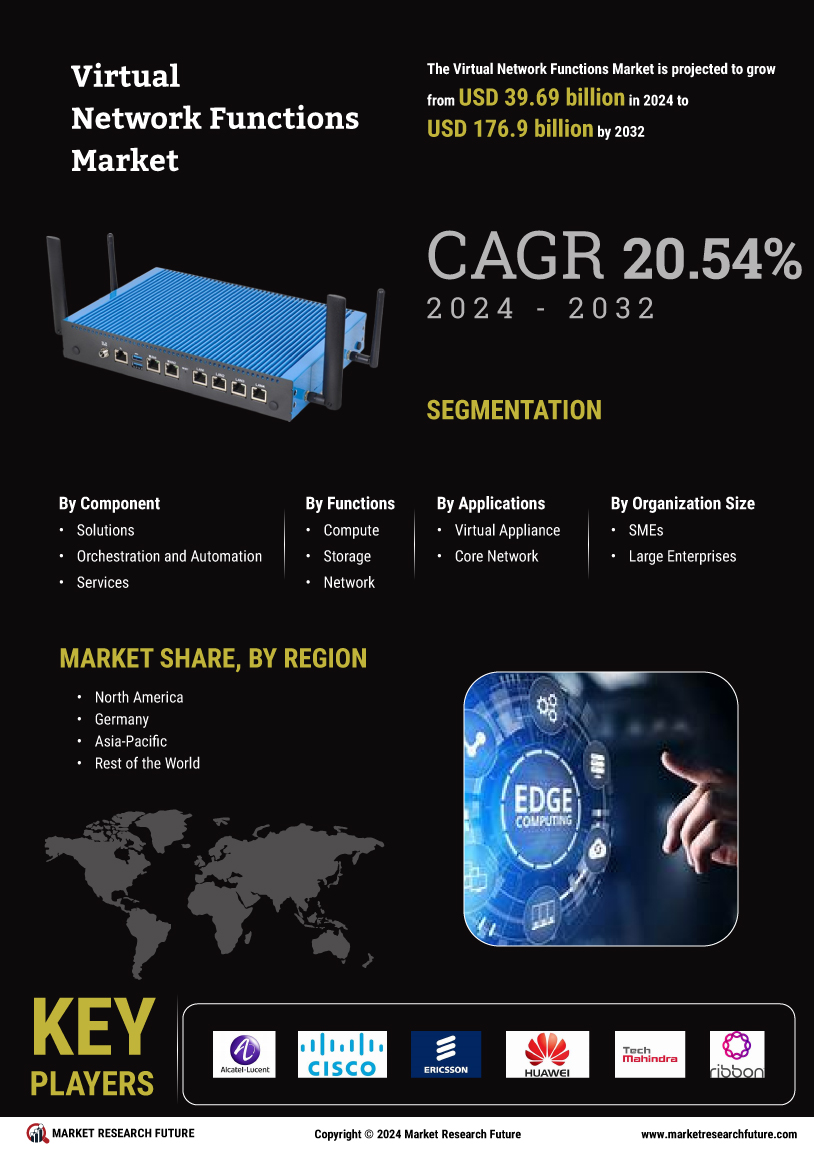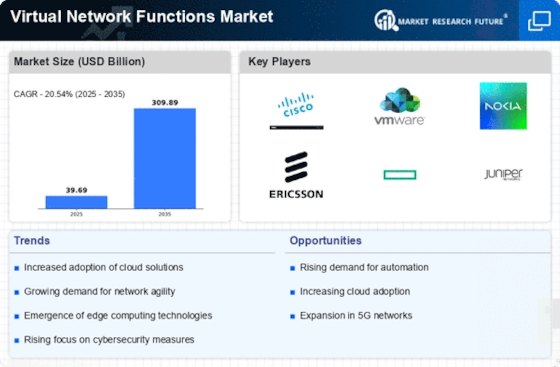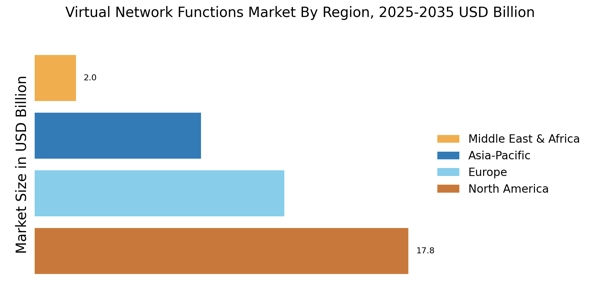Adoption of 5G Technology
The rollout of 5G technology is significantly influencing the Virtual Network Functions Market, as it necessitates the deployment of more sophisticated network architectures. 5G networks require enhanced flexibility and scalability, which virtual network functions can provide. The market is anticipated to witness substantial growth, with estimates suggesting a valuation of USD 80 billion by 2027, largely attributed to the 5G revolution. This technology enables faster data transmission and lower latency, which in turn drives the need for virtualized network solutions that can efficiently manage increased traffic loads. As telecommunications companies invest heavily in 5G infrastructure, the demand for virtual network functions that support these advancements is likely to escalate, further solidifying the Virtual Network Functions Market's role in the telecommunications sector.
Emergence of IoT Applications
The proliferation of Internet of Things (IoT) applications is a key driver for the Virtual Network Functions Market, as it creates a demand for robust and scalable network solutions. With billions of devices expected to be connected in the coming years, the need for efficient network management becomes paramount. The market is projected to grow significantly, with estimates indicating a potential market size of USD 70 billion by 2028. Virtual network functions facilitate the seamless integration and management of IoT devices, allowing organizations to handle the complexities associated with large-scale deployments. This trend is further supported by the increasing reliance on data analytics and real-time processing, which require agile network infrastructures. Consequently, the Virtual Network Functions Market is poised to capitalize on the burgeoning IoT landscape, providing essential solutions for effective network management.
Growing Demand for Network Agility
The Virtual Network Functions Market is experiencing a surge in demand for network agility, driven by the need for organizations to adapt quickly to changing business environments. As enterprises increasingly rely on digital transformation, the ability to deploy and manage network services dynamically becomes crucial. This demand is reflected in the projected growth of the market, which is expected to reach USD 60 billion by 2026. Companies are seeking solutions that allow them to scale their network resources efficiently, thereby enhancing operational flexibility. The shift towards software-defined networking (SDN) complements this trend, as it enables organizations to automate and optimize their network functions. Consequently, the Virtual Network Functions Market is positioned to benefit from this growing emphasis on agility and responsiveness in network management.
Increased Focus on Network Security
The rising concerns regarding cybersecurity threats are propelling the Virtual Network Functions Market towards enhanced security solutions. Organizations are increasingly aware of the vulnerabilities associated with traditional network architectures, prompting a shift towards virtualized environments that offer improved security features. The market is projected to grow at a compound annual growth rate (CAGR) of 25% over the next five years, driven by the integration of advanced security protocols within virtual network functions. These solutions provide organizations with the ability to implement security measures such as firewalls, intrusion detection systems, and encryption more effectively. As cyber threats continue to evolve, the demand for secure virtual network functions is expected to rise, positioning the Virtual Network Functions Market as a critical component in the broader cybersecurity landscape.
Cost Efficiency and Resource Optimization
Cost efficiency remains a pivotal driver in the Virtual Network Functions Market, as organizations strive to reduce operational expenses while maximizing resource utilization. By adopting virtual network functions, companies can significantly lower their capital expenditures associated with hardware investments. The market analysis indicates that businesses can achieve up to 30% savings in operational costs through the implementation of virtualized network solutions. This financial incentive is particularly appealing to small and medium-sized enterprises, which often operate with limited budgets. Furthermore, the ability to optimize resources through virtualization allows for better allocation of IT budgets, enabling organizations to invest in other critical areas. As a result, the Virtual Network Functions Market is likely to see continued growth as more enterprises recognize the financial benefits of transitioning to virtualized network environments.

















